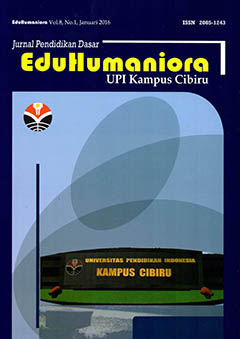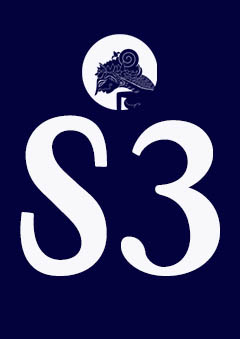STUDI ANALISIS KEBUTUHAN TERHADAP PENGEMBANGAN MODEL BLENDED LEARNING PADA SISTEM PENDIDIKAN JARAK JAUH UNTUK MENINGKATKAN KOMPETENSI LULUSAN
Abstract
Abstract: Open University in Indonesia as the higher education institution is using DE modes. All course content are delivered through printed learning modules, and 25 percent of course materials are multimedia packages. Learning support is provided via face-to-face, online, and broadcast modes. Radio tutorials are broadcast by the government-owned National Radio Station Network. Online courses use a learning management system. All online support services can be accessed by students through the UT-Online portal, which contains online tutorials and exercises, Web-based learning materials, streamed TV programs, a digital library with journals and transcripts, academic counseling, and ther online education facilities. This study aimed to analyze the need of the development model of blended learning for action research course which increasing the competence of primary school teacher students. The research was conducted in UPPJJ UT Bandung, one of UT’s regional office in west java. Research subject was students, tutors and administrator classroom. By the study, specific goals can be outlined as follows: (i) to study the existing condition of the learning process that occurs at present in S1 PGSD UPBJJ UT Bandung; (ii) to develop form of a blended learning model can improve the competency of graduates; (iii) to study the perceptions of students and faculty on the application of blended learning model on distance learning System; (iv) to study the effectiveness of blended learning model on distance learning systems at UPBJJ S1 PGSD Bandung Indonesia.
Keyword: Long Distance Education, blended learning; teacher education
Abstrak: Universitas Terbuka di Indonesia adalah lembaga pendidikan tinggi yang menggunakan DE mode. Seluruh perkuliahan disampaikan melalui modul pembelajaran cetak, dan 25 persen dari materi perkuliahan adalah paket multimedia. Dukungan belajar disediakan melalui tatap muka, online, dan mode broadcast. tutorial radio yang disiarkan oleh Jaringan Stasiun Radio Nasional milik pemerintah. Perkuliahan online menggunakan sistem manajemen pembelajaran. Semua layanan dukungan online dapat diakses oleh siswa melalui portal UT-Online, yang berisi tutorial online dan latihan, bahan belajar berbasis web, streaming program TV, perpustakaan digital dengan jurnal dan transkrip, konseling akademik, dan fasilitas pendidikan online. Penelitian ini bertujuan untuk menganalisis kebutuhan model pengembangan blended learning untuk perkuliahan penelitian tindakan yang meningkatkan kompetensi siswa guru sekolah dasar. Penelitian ini dilakukan di UPPJJ UT Bandung, salah satu kantor regional UT di Jawa Barat. Subjek penelitian ini adalah siswa, tutor dan administrator kelas. Pemelitian ini memiliki tujuan spesifik yang dapat diuraikan sebagai berikut: (i) untuk mempelajari kondisi yang ada dari proses pembelajaran yang terjadi saat ini di S1 PGSD UPBJJ UT Bandung; (ii) mengembangkan bentuk model blended learning dapat meningkatkan kompetensi lulusan; (iii) untuk mempelajari persepsi mahasiswa dan fakultas pada penerapan model pembelajaran blended tentang Sistem pembelajaran jarak jauh; (iv) untuk mempelajari efektivitas model pembelajaran blended pada sistem pembelajaran jarak jauh di UPBJJ S1 PGSD Bandung Indonesia..
Kata Kunci: pendidikan jarak jauh, blended learnng, pendidikan guru
Full Text:
PDFReferences
Baggaley, J. and T. Belawati. (2007). Distance education technology in Asia. Part 1: Past and present. Lahore: Virtual University of Pakistan.
Belawati, T. (2003). The implementation of e-learning in Indonesian distance education. In D. Andriani (Ed.), Cakrawala Pendidikan: E-learning dalam Pendidikan. Jakarta: Universitas Terbuka.
Bloom, B. S. (1956). Taxonomy of educational objectives: The classification of educational goals. New York: Longman.
Bonk, C. J., & Graham, C. R. (2006). The handbook of blended learning: Global perspectives, local designs. San Francisco, CA: Pfeiffer Publishing.
Darling-Hammond. dan Bransford (Ed.).2005. Preparing Teachers for a Changing World. San Francisco: Jossey-Bass Publishing.
Govindasamy, T. (2002). Successful Implementation of e-Learning: Pedagogical Considerations. Internet and Higher Education, 4, 287–299.
Hammer, M., dan Champy, J. (1993). Reengineering the Corporation: A Manifesto for Business Revolution. New York: HarperBusiness.
Harry B.Santoso (2004). E-Learning; Belajar Kapan Saja dan Dimana Saja.
Harding, A., Engelbrecht, J., Lazenby, K. and le Roux, I. (2005) Blended learning in mathematics: Flexibility and Taxonomy in Handbook of Blended Learning Environments: Global Perspectives, Local Designs. Editors: Curt Bonk and Charles Graham, Pfeiffer Publishing.
Hasibuan, M. S., & Hasibuan, Z. A. (2006). Preliminary Report Overview on E-Learning System. In Seminar Nasional Aplikasi Teknologi Informasi (SNATI).
Lie, A. (2004). Pendidikan dalam Dinamika Globalisasi. Dalam Widiatono, T. D. Pendidikan Manusia Indonesia. Jakarta: Kompas dan Yayasan Toyota dan Astra, 217-231.
Loughran, John. 2010 . What Expert Teachers Do; Enhancing professional knowledge for classroom practice. Crows Nest NSW, Australia: Allen&Unwin.
Sukmadinata, Nana Syaodih (2005). Metode Penelitian Pendidikan.Rosdakarya. Bandung
Mohandas, R. (2003). ICT and e-Learning in Indonesia. Presentasi di Tainan, Taiwan, 25-27 Maret.Negroponte, N. (1998). Being Digital. Terjemahan, Bandung: Mizan.
Pannen, P. (2005). Pemanfaatan ICT dalam Pembelajaran. Presentasi pada Seminar Sun Commitment in Education and Research Industry, Jakarta, 29 Juni.
Paurelle, S. (2003). E-learning and constructivism. Learning and Teaching Enhancement Unit (LTEU). Canterbury Christ Church University College. Briefing paper.
Pituch, K. A., dan Lee, Y.-k. (2004). The Influence of System Characteristics on e-Learning Use. Computers & Education.
Purwanto. (2009). Evaluasi Hasil Belajar. Yogyakarta: Pustaka Pelajar
Hadjerrouit, Said (2007) Applying a System Development Approach to Translate Educational Requirements into E-Learning. Agder University College, Kristiansand, Norway.
Wall, J., & Ahmed, V. (2008). Lessons learned from a case study in deploying blended learning continuing professional development. Engineering, Construction and Architectural Management, 15(2), 185-202.
Zhao, J. (2008). An examination of students’ perception of blended e-learning in Chinese higher education. Technologies for E-Learning and Digital Entertainment, 162-170.
DOI: https://doi.org/10.17509/eh.v8i2.5133
Refbacks
- There are currently no refbacks.
Copyright (c) 2017 Kampus Cibiru 2016
EduHumaniora: Jurnal Pendidikan Dasar
Published in collaboration Program Studi PGSD UPI Kampus Cibiru
and
HDPGSDI
This work is licensed under a Creative Commons Attribution-ShareAlike 4.0 International License.















